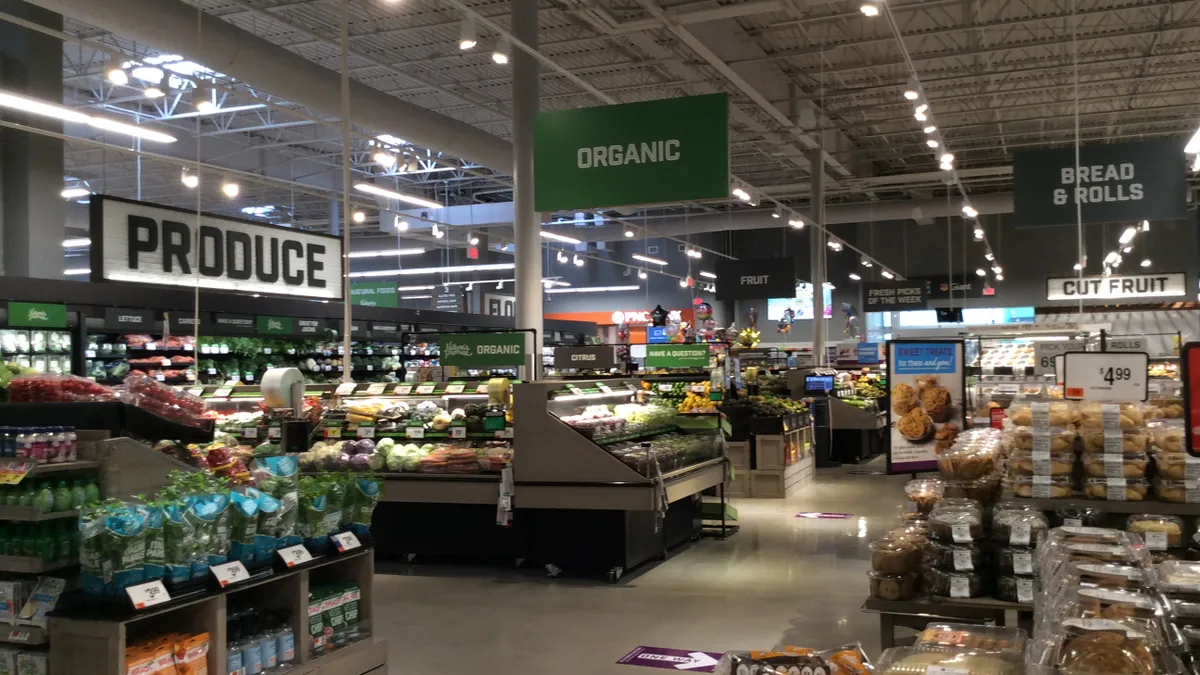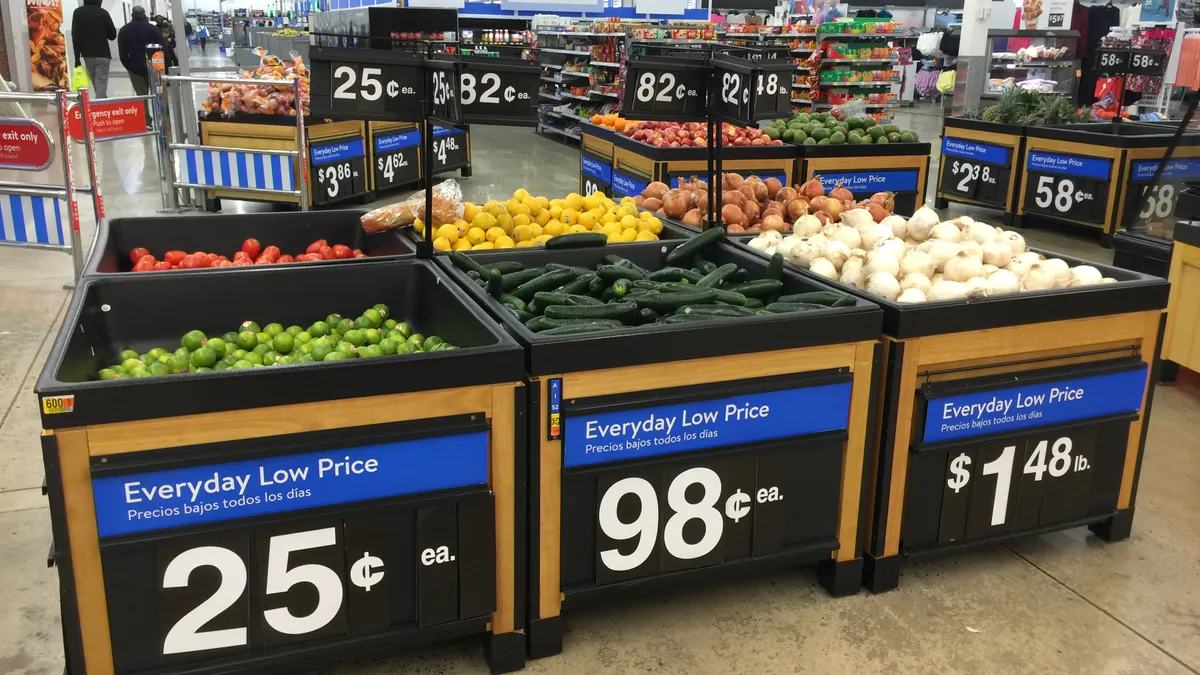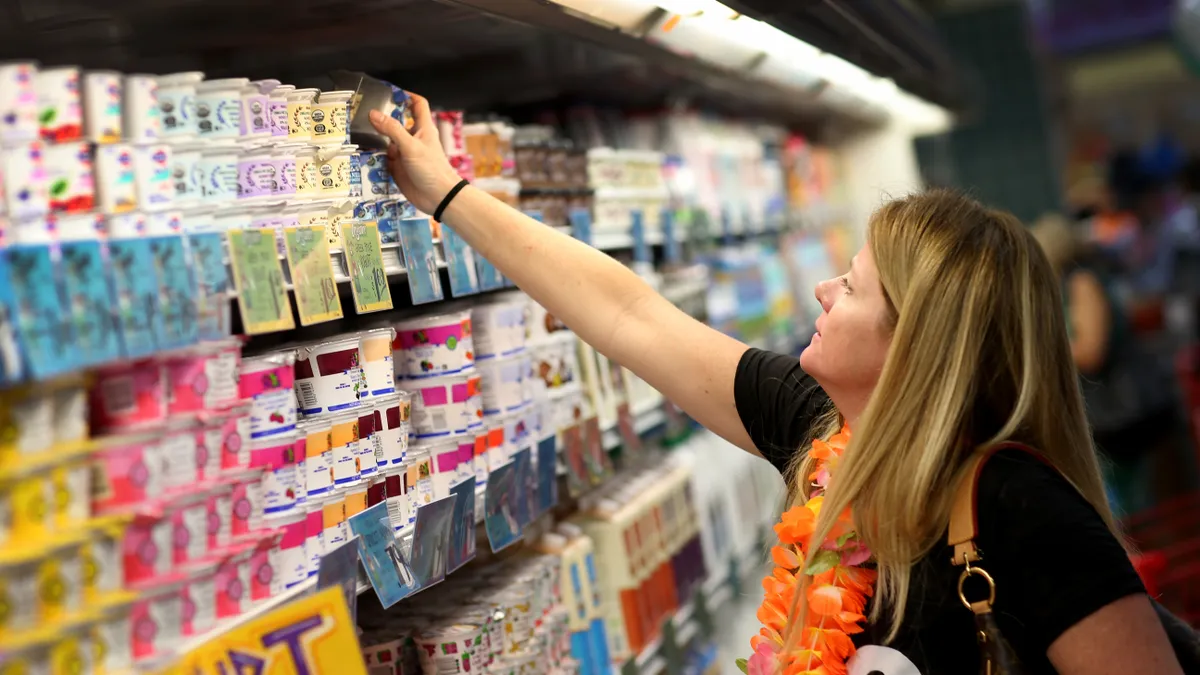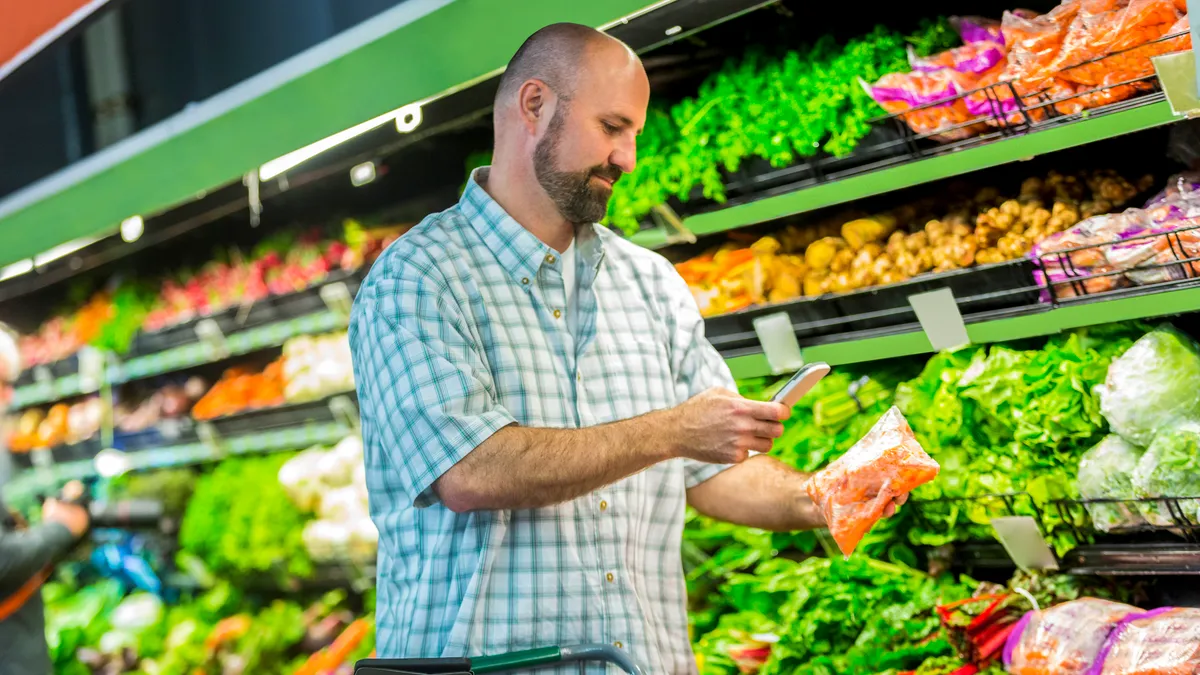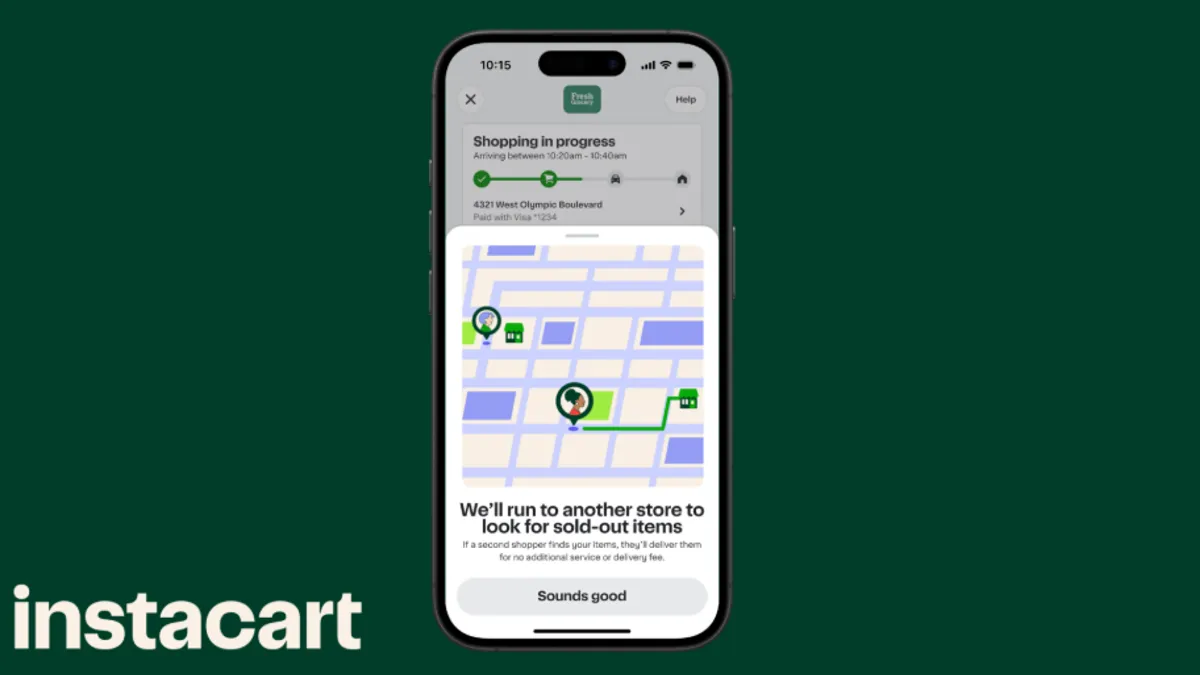Six months after the coronavirus pandemic sent people racing to supermarkets to load up on provisions, consumers and grocers alike have settled into a shopping routine dominated by social distancing protocols, face coverings, strict cleaning regimens and a host of restrictions on everyday staples like salad bars and bulk food bins.
Beyond upending the universal experience of going to the store for groceries, the public health crisis has raised fundamental questions about how supermarkets will look during the years to come. What will it take for people who have grown accustomed to getting their shopping done as quickly as possible to regain their former sense that food shopping is meant to be enjoyed, not feared? How can retailers bring customers who have shifted their buying online back into stores?
To get an idea of what store designers are considering as they look ahead, Grocery Dive spoke with two architects who specialize in planning and outfitting retail environments. They agree that while people’s visceral desire to connect with food may have been suppressed by the pandemic, it remains as strong as ever just below the surface.
Flexibility will replace uncertainty
“Grocery stores want to convey a feeling of accessible bounty,” said Laura Gardner, a senior associate with MG2, an architecture firm that has consulted with a range of supermarkets, including PCC Community Markets, a Seattle coop. “People want stores to feel accessible and have a view of the food. Even post-Covid, we’re going to need to have design devices that keep that feeling of openness.”
Gardner thinks one way to accomplish this will be for supermarkets to swap out permanent fixtures for equipment that can be moved relatively easily, so stores can better tailor their layouts to meet changing consumer tastes and market conditions. For example, expect to see more moveable furniture instead of tables and seating that are bolted in place, Gardner said.
“Flexibility has always been practiced in design, but I think there’s more emphasis on it now and it’s more entrenched,” she noted. “People are thinking maybe we should be ready for something else to happen even though we don’t know what it is.”
Making pickup more of an experience
Shoppers have flocked to click-and-collect during the pandemic, and now grocers are looking for ways to improve the service. Gardner thinks supermarkets will make better use of outdoor spaces and turn the pickup experience from an errand into something more enjoyable, which could help shoppers feel more comfortable going to the supermarket.
She envisions stores turning utilitarian pickup areas into spots where people can buy a drink or a takeout meal before driving off with their grocery orders. Stores also could use these outdoor areas to communicate with shoppers through signage and other visual material, Garner said.
Stepping up energy efficiency
Gardner noted that grocers she works with are also investing in making their stores more energy efficient, adding that this has become more urgent during the pandemic because of the need to add more advanced air filtration capabilities to combat the virus. These systems are more costly to operate than less advanced systems because they circulate air more frequently.
She noted that clients she works with are interested in upgrading a range of systems, including refrigeration equipment, stoves, dishwashers and heating and cooling equipment, with an eye toward saving electricity and water. Grocers are also looking at putting in systems that use coolant that is more environmentally friendly than what they have used in the past, according to Gardner.
While many of these changes may be out of sight to consumers, others are more noticeable. Gardner pointed out that stores have been gravitating toward refrigerators that use doors whenever possible, and are likely to add coverings to more cooling cases both to conserve energy and protect food and services from contamination.
A buffer between the store and the world outside
Another way stores might change is by adding features that reduce the stress many shoppers currently feel when they enter a grocery store — and that will likely linger well into the future, said David Katz, founder of New York-based Katz Architecture and a specialist in retail store design.
That could mean adding what Katz called an “orientation space” to the front of a store that exudes a sense of calm and allows shoppers to transition gradually into the store environment. This space would include welcoming design features. It could also be where shoppers use kiosks to buy packaged goods and other commodities, allowing stores to accentuate fresh produce, seafood, prepared foods and other product categories shoppers like to choose themselves, Katz said.
If shoppers order packaged goods and other center-store items using automated systems instead of picking them on their own, stores would need fewer aisles and people would have less need to push carts around, Katz said. Stores could even opt to build piazza-like spaces that make the act of purchasing groceries feel less transactional and more interactive, he said.
“The fact that people are scared to congregate has transformed their notions about what makes design sense,” Katz said. “The question is about how entertainment gets reintroduced to the shopping experience. Grocery stores are going to have to investigate different models.”
Adding open space — both indoors and outdoors
Katz also thinks designers could draw inspiration from strategies designers in previous eras devised to rebuild people’s comfort with their surroundings.
Katz pointed out modern architecture is in some ways a reaction to the flu pandemic of 1918, which made people distrustful of physical spaces that looked like they could harbor pathogens. That fear led architects to trade the heavy ornamentation that defined buildings in the early part of the 20th century for simpler design features without areas where people felt dangers could lurk unseen, he said.
“Modern architecture is now stylistic, but at the time it had to do with people wanting to feel germ-free,” Katz said. “I think that same thinking is going to follow us here. There will be an evolution toward more open, light-filled spaces. People are going to want to be outdoors more.”



